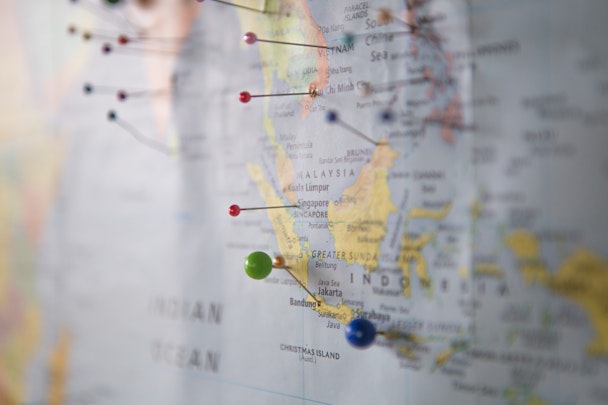Google’s Simon Kahn: Asia can lead the way to a better global internet
The rapid global spread of the Covid-19 virus has impacted thousands of people. The uncertainty around the pandemic has resulted in a surge of protective behaviours and self-quarantine measures. With more time spent at home, people are using technology to make life easier. From getting reliable information on how to stay safe to shopping online for necessities, the web is helping people find a sense of normal under extraordinary circumstances.

Wider communities are leveraging digital tools to stay connected. Schools are turning to online curriculums. Businesses are learning to operate with a remote workforce. Marketers turning to virtual platforms to engage with customers at scale. If “necessity is the mother of invention”, the pandemic has created an environment for digital technology to offer the most help. However, many of the behaviors we are seeing are not new. The crisis has accelerated shifts that early adopters have already embraced. Consumers want to feel connected to a larger purpose by engaging in participatory content or supporting products or services that speak to their identity. We believe the changes we see now are indicative of changing consumer values that will have a long-term impact on the relationship between brands and consumers.
As we address the immediate effects of the current crisis, we should not lose sight of what consumers want once things eventually settle. In the latest Google, Asian Consumer Intelligence, and Qualtrics Consumer Insights Report, we see Asia shaping three trends that will influence how people around the world use technology, and how companies build for the future.
Shared Experiences
Businesses and educators are embracing digital solutions to help them stay productive. More people are gaining exposure to tools like video conferencing, chat, and collaborative documents. This exposure is accelerating the adoption of technologies that allow people to connect virtually and feel part of a community, even when they are unable to do so in person.
The desire for participatory content first emerged in the late 2000s as “Mukbang”—an activity where creators live stream themselves eating large amounts of food while interacting with online audiences—became popular in South Korea. Participatory content quickly expanded beyond eating. Online viewers began following along as their favourite creators did everything from cook to clean, becoming part of the action by indulging in the same activities.
For over 50% of internet users in the region, watching a live stream is like connecting with their friends. It makes them feel like part of a bigger community. The region is moving beyond a ‘tell me’ approach—where information and entertainment flow in one direction—to a ’with me’ approach that prioritises sharing, connecting and learning.
Inclusivity
Asia’s diversity is pushing companies to create more inclusive products. From e-commerce platforms offering products suited to Asian sizes and features to food retailers providing transparent information for Halal customers, the region’s diversity has pushed companies to make services available to people of all backgrounds.
Almost two-thirds of those surveyed in the report believed the world would be fairer if more people practised inclusivity, with 95% saying they would react negatively to bad user experience. The call for more inclusive technology could lead to breakthroughs that improve the lives of people living with a disability, encouraging business everywhere to design their products and services more thoughtfully—while breaking down preconceptions about what the ‘average’ person wants, or how they look.
This reflects the changing expectations that consumers have from brands—not just to sell their goods, but to be forces for good. Consumers are voting with their wallets, demanding more sustainable and inclusive solutions from the brands that they support.
Shared Commerce
Younger Asians especially are championing ‘re-commerce’: buying and selling used goods or renting products for a season. E-commerce platforms like China’s YCloset, Japan’s Mercari or Singapore’s MyRent are making this easy. Cost is a concern, but so are environmental issues. Hong Kong has the world’s third-highest consumer interest in sustainable fashion, while searches for ‘zero waste’ increased five-fold in India and seven-fold in Vietnam in 2019. More than half of all online millennials and Gen Zs in APAC believe that pre-owned products have better value than new items. The rise of shared commerce trends—and the marketplaces that support them—shows how the internet can pave the path to more sustainable shopping and supply chains.
None of this means we can gloss over the real challenges of technology and the digital economy. From the spread of misinformation and extreme content to the need for digital skills in changing industries, Asia’s governments, businesses and communities need to grapple with the same complex issues that technology presents everywhere. However, for anyone who doubts the positive potential of a digitizing world, Asia provides a shot of optimism: a more positive story about the way people use technology to improve their lives and to inspire, entertain and help others.
As Asia’s global leadership role grows, its people are demanding more from the technologies they use every day and its entrepreneurs are building new platforms and services to meet those evolving needs. It is up to every business, Google included, to rise to that challenge and play our part.
Simon Kahn is chief marketing officer of Google APAC.
